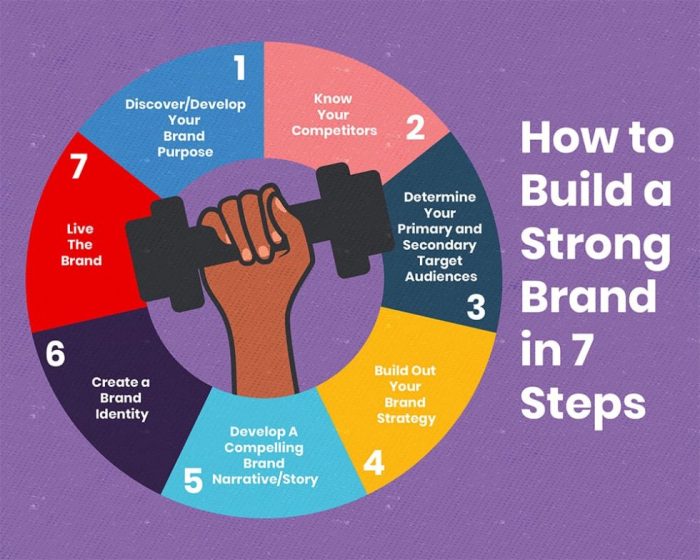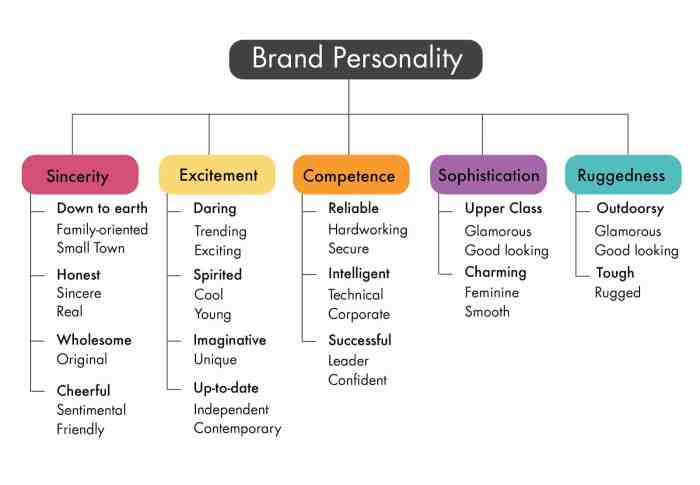Developing Brand Identity takes center stage in the business world. Get ready to dive into the key elements that shape a brand’s image and learn how to set your business apart from the competition.
From logos to color palettes, this topic explores the art of creating a strong brand identity that resonates with your target audience.
Importance of Brand Identity
In the cutthroat world of business, having a strong brand identity can make or break a company. It’s like your business’s personality – it’s how customers perceive you, remember you, and connect with you. Without a solid brand identity, you’re just another face in the crowd.
Examples of Successful Brands with Strong Brand Identities
- Apple: Known for its sleek design, user-friendly products, and innovative technology, Apple has built a brand identity that screams creativity and quality.
- Nike: Just do it. That simple tagline embodies Nike’s brand identity – empowering, inspirational, and driven.
- Coca-Cola: The red and white colors, the classic font, the refreshing taste – Coca-Cola’s brand identity is timeless, recognizable, and deeply ingrained in pop culture.
How a Well-Defined Brand Identity Can Set a Business Apart from Competitors
Having a well-defined brand identity can help your business stand out in a sea of competitors. It gives you a unique voice, a distinct personality, and a clear message that resonates with your target audience. When customers can easily identify and connect with your brand, they’re more likely to choose you over your competitors.
Elements of Brand Identity: Developing Brand Identity
Creating a strong brand identity involves several key components that work together to establish a brand’s unique presence in the market.
Logo
The logo is often the most recognizable element of a brand. It serves as a visual representation of the company and is crucial in creating brand recognition. A well-designed logo should be simple, memorable, and relevant to the brand’s values and offerings.
Color Palette
Colors play a significant role in shaping brand identity. Each color evokes specific emotions and associations, so choosing the right color palette is essential. Consistency in using colors across all brand materials helps in reinforcing brand recognition.
Typography
Typography refers to the style and arrangement of text used by a brand. The choice of fonts can convey the brand’s personality and tone. Whether sleek and modern or traditional and classic, typography contributes to the overall brand image.
Brand Voice
Brand voice encompasses the language and tone used in all brand communications. It reflects the brand’s personality, values, and target audience. Establishing a consistent brand voice helps in building a strong and cohesive brand identity.
Impact on Brand Perception
Each element of brand identity plays a crucial role in shaping how consumers perceive a brand. A well-crafted logo, cohesive color palette, distinctive typography, and consistent brand voice all work together to create a memorable and impactful brand presence in the market.
Developing a Strong Brand Identity

Creating a cohesive brand identity involves several key steps that are crucial for establishing a strong and recognizable brand. It’s essential to align the brand identity with the company’s values and target audience to ensure consistency and resonance. Market research plays a vital role in shaping a brand’s identity by providing valuable insights into consumer preferences and trends.
Steps in Creating a Cohesive Brand Identity
- Define your brand’s mission, vision, and values to establish a clear direction.
- Create a unique brand personality that resonates with your target audience.
- Design a memorable and versatile logo that represents your brand effectively.
- Develop brand messaging that communicates your brand’s story and value proposition.
- Consistently apply your brand elements across all touchpoints to build brand recognition.
Tips for Aligning Brand Identity with Company Values and Target Audience
- Ensure that your brand values are reflected in every aspect of your brand identity.
- Understand your target audience’s preferences, behaviors, and needs to tailor your brand identity accordingly.
- Create brand messaging that resonates with your audience and speaks to their emotions and aspirations.
- Stay true to your brand’s personality and values in all communication and marketing efforts.
Role of Market Research in Shaping a Brand’s Identity
Market research provides valuable data and insights that help brands understand their target audience, competition, and industry trends. By conducting thorough market research, brands can identify opportunities for differentiation, develop effective brand positioning strategies, and create tailored brand identities that resonate with consumers. Market research also helps brands stay relevant and competitive in a constantly evolving marketplace.
Brand Identity Consistency

Maintaining consistency across all brand touchpoints is crucial to establishing a strong and recognizable brand identity. Consistency helps build trust with customers, creates a sense of reliability, and reinforces the brand image in the minds of consumers.
The Importance of Consistency
Consistency in brand identity ensures that customers can easily recognize and connect with your brand no matter where they encounter it. Whether it’s on your website, social media, packaging, or advertising, consistency helps to convey a cohesive brand message and build brand loyalty.
- Consistent Visual Elements: Using the same colors, fonts, logos, and imagery across all platforms helps customers instantly identify your brand.
- Consistent Messaging: Maintaining a consistent tone of voice and communication style reinforces the brand personality and values.
- Consistent Customer Experience: Providing a consistent experience at every touchpoint builds trust and loyalty among customers.
Examples of Inconsistent Brand Identity
Inconsistent brand identity can confuse customers and weaken brand perception. For example, if a company uses different logos on its website, social media, and products, customers may question the authenticity of the brand. Similarly, conflicting messages or visuals can lead to a lack of brand recognition and dilute the overall brand impact.
- A clothing retailer using different color schemes in-store and online can create confusion among customers.
- An e-commerce platform with inconsistent product descriptions and images may fail to establish a clear brand identity.
- A restaurant chain with varying service quality across locations can damage the brand reputation and customer loyalty.
Strategies for Ensuring Brand Consistency, Developing Brand Identity
To maintain brand consistency across various marketing channels, businesses can implement the following strategies:
- Create Brand Guidelines: Develop comprehensive brand guidelines that Artikel visual elements, messaging standards, and brand values to ensure consistency.
- Train Employees: Educate employees on the importance of brand consistency and provide training on how to apply brand guidelines in their day-to-day interactions.
- Use Templates: Design templates for marketing materials, social media posts, and other brand assets to maintain a consistent look and feel.
- Regular Audits: Conduct regular audits of brand touchpoints to identify any inconsistencies and take corrective actions promptly.





